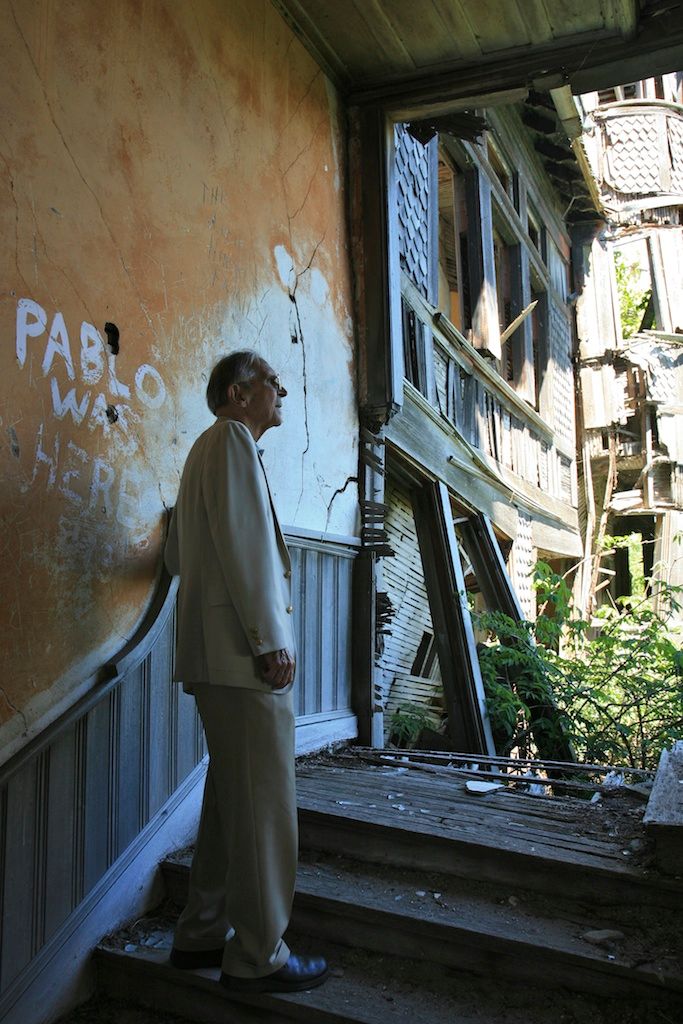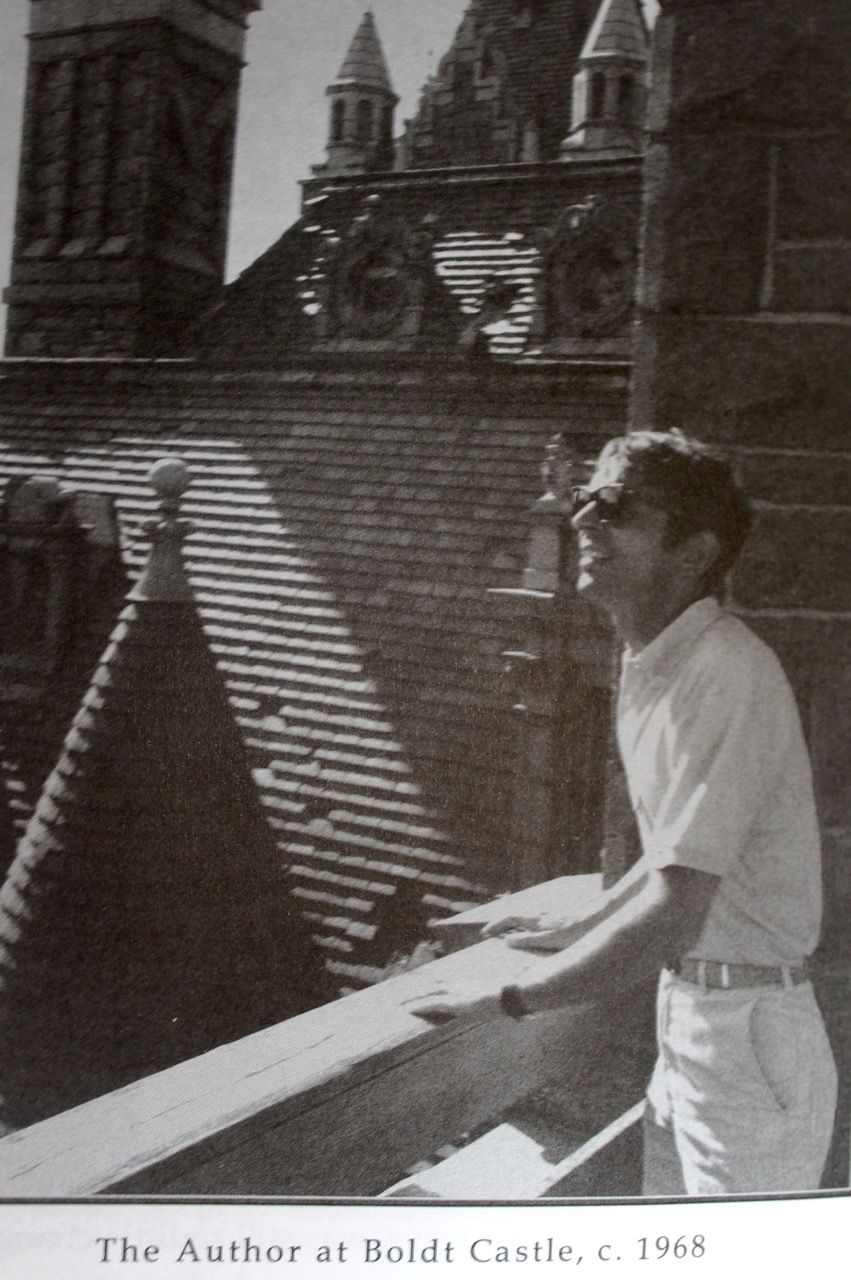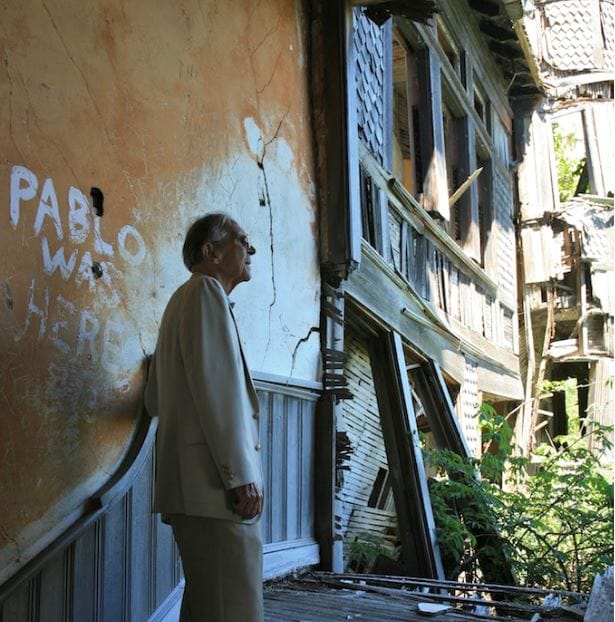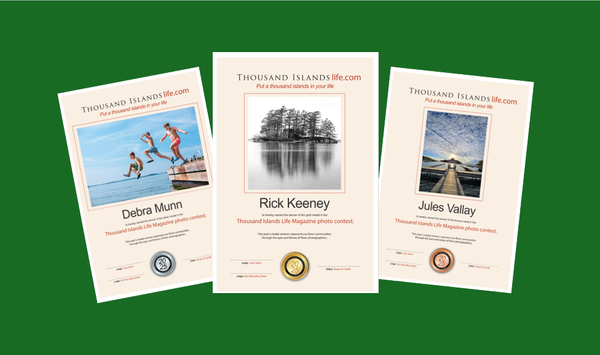Remember Paul Malo: "Mr. Thousand Islands."
by: Kim Lunman Grout
Editor's note: When Kim Lunman and I first met Ian Coristine, we were struck by Ian's appreciation of Paul Malo's talents and the man as a friend. For us, this was the first of many times that our friend Ian showed his ability to be a connector. It was Ian who persistently asked Kim to make the trip to visit Paul at the end of his life.
Paul and Ian were good friends. Ian recognized Paul's love for the River and his ability to show others why his place was important. Paul recognized Ian's love of the River and his ability to show others why this place was important. A special team that truly started "raising the bar."
I feel it is important to present Kim Lunman's tribute once again - for this is where it all began - thanks to one Ian Coristine.
A tribute to Paul Malo in Brockville's The Recorder & Times
Written by Kim Lunman & posted on August 16, 2008
The Thousand Islands has lost one its most influential voices.

Paul Malo, architect, author and advocate for this magical place he called ‘A Floating World’ has passed away. He was 78. He died Tuesday at home in Granby, in Oswego County, New York, with his family at his side.
A gentleman and a scholar, he was a professor until the very end. I had the honour of meeting Malo several weeks ago at a Syracuse hospital where he was in the final stages of pancreatic cancer after battling the disease for more than a year and a half.
He wanted to talk about his favourite subject: the Thousand Islands. I was embarking on a project for this newspaper on that very topic called Island Treasures, a series of stories to run each Saturday throughout this summer about some of the hidden jewels on the St. Lawrence River.
At Carleton Villa, Carleton Island
These would be places Malo discovered and documented for decades. But he spoke of them with youthful wonder. Even though he was sick and frail, his eyes lit up when he recounted his life-long love of the place he first discovered as a teenager rowing his St. Lawrence skiff around the islands near Clayton.
Malo’s fascination for the river, its islands, cottages and fabled castles started as a young boy when he began collecting postcards and souvenir books of the area. “I became absolutely intrigued by the mystery of this place,” he said. “My intention at the time was to be the great authority on the Thousand Islands and answer all my questions.”
Malo and his books proved to be an invaluable resource as I began to trace just a few of his many footsteps through the Thousand Islands. He was instrumental in preserving Thousand Island Park on Wellesley Island, a 19th-century resort and former Methodist camp known for its gingerbread cottages seemingly stopped in time.
I walked through the grounds of the crumbling Carleton Villa, a once majestic mansion on Carleton Island that Malo featured on the cover of his book, Fools’ Paradise: Remembering the Thousand Islands. He wanted this property, like the beautiful buildings at TI Park, to be preserved. It stands today a skeleton for sale on the rugged private island where it once was the lavish summer home of New York tycoon William O. Wyckoff who made a fortune selling Remington typewriters.
Malo is the author of two other books on the Thousand Islands: Boldt Castle: In Search of the Lost Story and A Floating World: More People, Places, and Pastimes of the Thousand Islands. Many of his accounts document the area’s Gilded Age when wealthy industrialists built extravagant estates and toured the river in steam yachts in the early 1900s.
“His legacy will live on,” said Thousand Islands photographer Ian Coristine, who collaborated with his friend and mentor on numerous books and projects. “He has shaped this place in ways that others could only dream of. I know of nobody who has contributed so selflessly to it as Paul Malo.”
“Vince Dee (the former Thousand Bridge Authority chairman) was his hero for his contributions to the St. Lawrence River and Paul is definitely mine.”

A native of Syracuse, Malo spent summers as a youth near Clayton. The award-winning historical preservationist taught architectural design and history at the Syracuse University School of Architecture for more than 30 years and remained a professor emeritus after his retirement. He designed the Civic Centre in Syracuse. In addition to writing and photography, the father of two was a gifted composer and pianist.
“He really was a renaissance man,” said his wife, Judith Wellman.
“It’s more than a personal loss,” she said. “There’s really no replacement for his wealth of knowledge on the area which he so generously shared with others.”
Malo mastered technology at 75 to put together a website on the Thousand Islands with Mike Franklin of Syracuse.
“The loss of Paul Malo to the Thousand Islands region is immeasurable,” said Franklin, adding "Malo’s books and work on www.ThousandIslandsLife.com only scratch the surface of his encyclopedic knowledge of the history of the place. He will be profoundly missed.”
Malo’s love affair with the Thousand Islands began in earnest when he took his skiff up onto Calumet Island off of Clayton to explore Calumet castle before it burned down in 1957. It was built by American Tobacco Co. millionaire Charles Emery in the late 1800s.
“It was extremely romantic,” he recalled. “This light would stream over the floors of the castle... I discovered a treasure of souvenirs.”
He chuckled as he recounted how he came across an old cheque book of Emery’s from the prohibition era. He came across one cheque to the Women’s Temperance League and the next for three barrels of rum.
“I became very interested in the people who built these places,” he said.
Malo would go on to debunk the fairytale love story of Boldt Castle in which a heart-broken George C. Boldt, owner of the Waldorf Astoria Hotel in New York, is said to have stopped building the castle on Heart Island in 1904 after Louise Boldt died.
“The official story is pure hokum,” he said. “The fact of the matter is they ran out of money.”
And it’s his theory Louise Boldt died of an overdose of diet pills. “It might very well have been suicide. She was not a very happy person.”
Over the years Malo got weary watching some of his favourite buildings in the Thousand Islands being destroyed when municipalities demanded full taxes be paid on properties by heirs who could no longer afford them following the Depression and turned his attention to other interests, including books and preservation projects in New York’s Adirondacks.
He was instrumental in saving Sagamore, a premiere Adirondack Great Camp built by William Durant and subsequently owned by Alfred G. Vanderbilt. He turned over all his archival material to the Antique Boat Museum in Clayton, forming the core of their collection, and for that time, the Adirondacks became his focus. But his true love was always the Thousand Islands.
His curiosity knew no borders. At the time of his death, he was finishing an essay on the Magedoma, the famous Fulford steam yacht restored in California under its original name the Cangarda after being raised from the bottom of Boston’s harbour. Malo remained optimistic one day it would make its way back home on the St. Lawrence River to a slip outside Fulford Place’s famous Edwardian mansion in Brockville.
“I sort of envisioned myself a public relations person for the whole region,” he told me. “One of the ambitions I had was to be Mr. Thousand Islands.”
And he really was. Malo’s ashes will be sprinkled over his favourite places, including the very islands that so enchanted him all of his life. A memorial service will be held Oct. 11 at Hendricks Chapel at Syracuse University.
As much as he dwelled in the area’s golden past, he deeply cared about its future.
“For the Thousand Islands to improve, there has to be a greater appreciation for this place,” he told me.
I knew it would be the first and last time we ever met as I waved goodbye to him at the door of his hospital room. But it didn’t dawn on me until now just how lucky I was to attend Professor Malo’s last lecture.
By Kim Lunman, August 2008






Please click here if you are unable to post your comment.